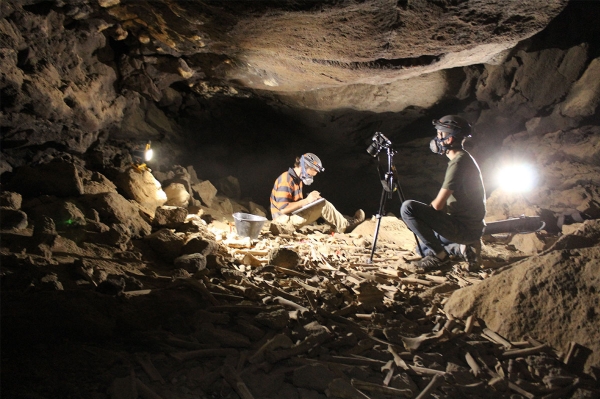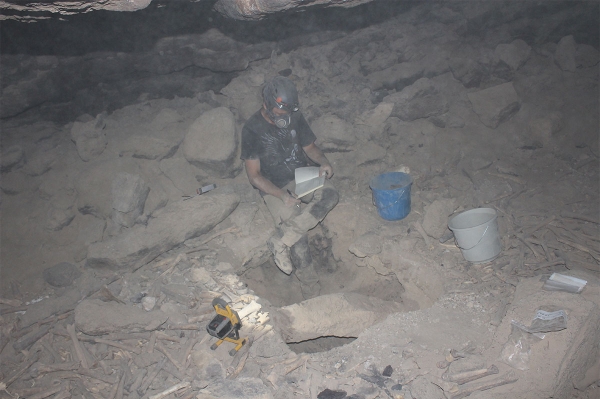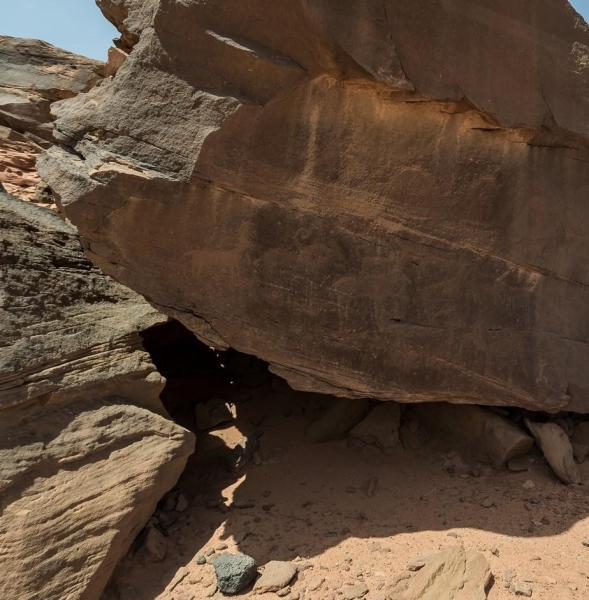



Cave Tourism in the Kingdom of Saudi Arabia is one of the tourist attractions for environmental and geological tourism in the Kingdom. It is considered an activity for explorers, specialized researchers, enthusiasts, and adventurers. The Ministry of Tourism, in collaboration with the Saudi Geological Survey, has identified a number of caves as a starting point to activate cave tourism in the Kingdom. Efforts are underway to discover more caves, assess their readiness, and incorporate them as tourist attraction factors for economic development in the Kingdom.
Cave tourism in the Kingdom represents economic tourism wealth, contributing to the introduction of its hidden landmarks within its vast desert environment. It enhances the outputs of academic scientific research and attracts experts and researchers in geological, engineering, and environmental specialties to discover many artifacts, including well-preserved animal bones and human remains, dating back thousands of years, found within some of the Kingdom's caves, as sources for studies on the evolution of organisms.
The nature of caves in the Kingdom
The caves in the Kingdom are formed from a rocky nature, with stalactites and stalagmites, and water erosion on the internal surfaces of the rocks. This creates stunning landscapes along with formations of rock sheets around their perimeters. Some caves in the Kingdom contain archaeological inscriptions around or inside them, dating back thousands of years. Several caves provide a suitable environment for wildlife and organisms, such as bats, birds, and mammals.
Geological tourism program for cave tourism
Since the mid-1980s, the Kingdom has been keen on caves and caverns (locally known as al-Dohoul). The Ministry of Tourism launched a geological tourism program in collaboration with the Saudi Geological Survey. The aim is to develop cave tourism in the Kingdom as part of the strategic objectives to diversify the national tourism product. This involves leveraging natural geological features while preserving them, activating cave tourism in the Kingdom, and enhancing employment opportunities and economic development for local communities.
Field visits programs to the caves of the Kingdom were organized to assess their readiness to receive tourists. Additionally, an agreement was signed to establish training programs for tourist tour guides in collaboration with the National Center for Tourism Human Resources Development (Takamul). Scientific field research has also been conducted on numerous caves in regions known for sedimentary rock formations.
Cave tourism sites in the Kingdom
Caves and caverns are found across the Kingdom, and Shu'fan Cave in Harrat an-Nar, south of Hail Province, stands as one of the largest recently discovered caves in the Kingdom. It spans approximately two km in length, with a height reaching around eight m. Its depth extends to eight hundred m below the surface. Shu'fan Cave is characterized by its diverse geological formations. Additionally, there's the Darb al-Najm Cave located in the eastern desert of al-Majma'ah. It consists of a cavity reaching a depth of about one hundred m, accessible only by rope, making it suitable for climbing enthusiasts.
The Umm Jirsan Cave in Harrat Khaybar, located about two hundred km north of al-Madinah al-Munawwarah along al-Madinah al-Munawwarah-Khaybar road, is considered one of the tourist attractions and one of the largest caves in the Arabian Peninsula, with a length of approximately 1,496 m. Additionally, there are the Dahal al-Tahalib Cave, al-Fondok Cave, and al-Murabba Cave in as-Samman area, about 220 km northeast of the capital Riyadh. Furthermore, there is the Black Scorpion Cave in the Northern Borders Province, and al-Onbobiya (tube) caves formed by volcanic eruptions over thousands of years in the Harrat Khaybar area in al-Madinah al-Munawwarah Province, such as the volcanic cave of 'Umm Ghraimil', with a height of about six m and a width of twelve m, containing remnants of bones of various animals dating back hundreds of years, as well as nests of birds in large quantities.
Requirements for cave tourism in the Kingdom
Cave tourism enthusiasts must ensure the preservation of natural resources and archaeological treasures intact, and utilize guides through an accredited trip organizer accompanied by a qualified tourist guide, in accordance with the required standards to provide safe tourism, ensuring the safety of the tourist and the cave environment. This involves using appropriate clothing and footwear, first aid, helmets and lighting, ropes, and ladders for descending and ascending, and avoiding unqualified sites.
The tourist caves have been equipped with informational and directional signs, and the necessary elements for the development of the cave's surrounding area have been specified to ensure that the area is not visually distorted, using rocks and trees native to the area.
The Saudi Cave Exploring Team
A group of experts and tour guides formed a specialized team for cave tourism and exploration in the Kingdom, named the Cave Exploring Team. Licensed by the Saudi Tourism Authority, the team is authorized to provide cave tourism guidance, contribute to the development of geological tourism in the Kingdom, and participate in preserving national environmental resources. They explore the Kingdom's cave potential and promote it as a national product.
Related quizzes

